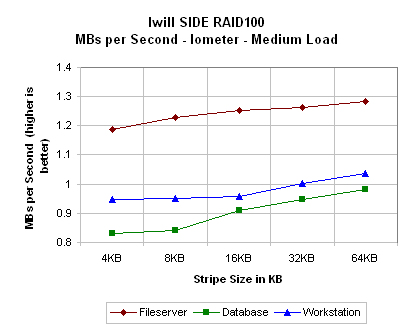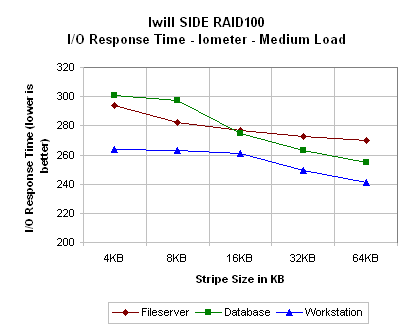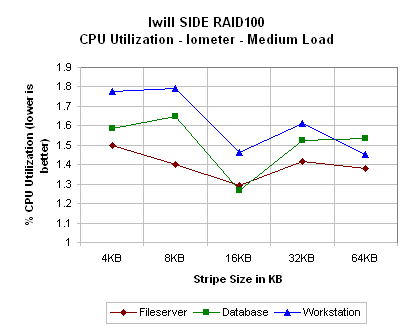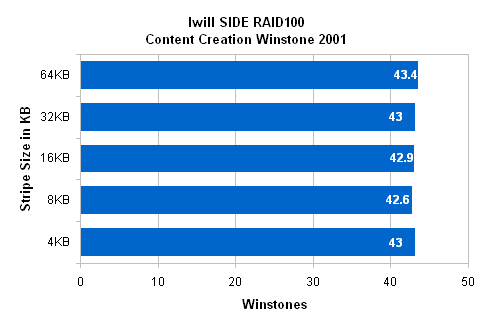Performance: Iwill SIDE RAID100
The Iwill SIDE RAID 100 makes use of the Highpoint HPT370A software RAID controller.

It seems that the Iwill SIDE RAID100 is held back by its lack of available stripe sizes. In our Iometer I/Os per second benchmark, the Iwill SIDE RAID100 keeps improving upon its performance until the stripe sizes run out at 64KB.

Once aging the MBs per second performance of the card keeps increasing until we run out of stripe sizes at 64KB. This is similar to the results we saw in the AMI card, where performance did not peak until a stripe size of 512KB was reached.

As the other graphs showed, once again the average I/O response time keeps decreasing as the stripe size gets larger. We do not reach a limit when performance starts to go down again because the available stripe sizes are too limited. 64KB seems to be the best that the Iwill SIDE RAID can do.

We can clearly see here that CPU utilization reaches a minimum at the 16KB stripe size on the SIDE RAID 100. The utilization does not go up too much more when increasing the stripe size up to the 64KB mark that we found to be most effective in the previous tests.

Like we saw in Iometer, Content Creation 2001 performs best when the stripe size of the SIDE RAID100 is the largest possible: 64KB. Here it performs about 2% faster than the slowest stripe size in the Content Creation benchmark, the 8KB size.










2 Comments
View All Comments
kburrows - Thursday, December 4, 2003 - link
Have you run any tests on any onboard RAID solutions for RAID 0 & 1? I would love to see the results posted for the new SATA RAID on the Intel 875 boards.Anonymous User - Sunday, August 17, 2003 - link
In adressing the performance of an raid array with different stripe sizes, you miss an important factor, namely the accestime of an disk. This wait time has two main couses. First the head positioning and second the rotational latency (the heads track the right trace, but position where the read start has not passed under the head). You may have to wait from 0 to (in the worst case) a full cycle.Since the disks move independently You can calculate that the average latency to get an small file is minimal when the stripe size is about an full cycle of an disk in the array (aprox. 250kB today). All other factors I do know do not reduce this. (controller overhead, transport,...)
So I think that today a minimum stripe size of 256kB should be used.